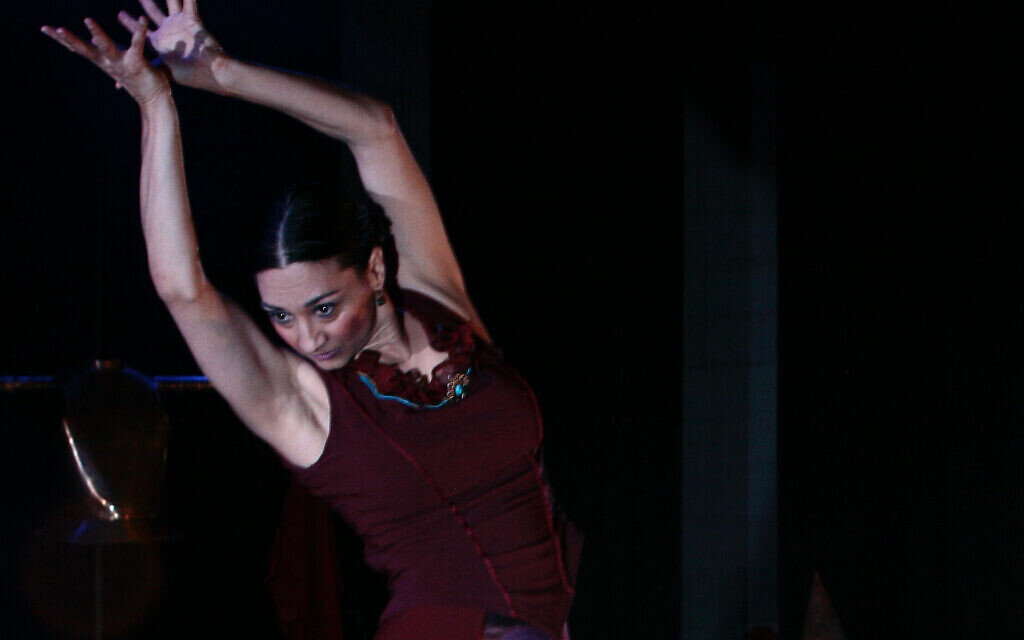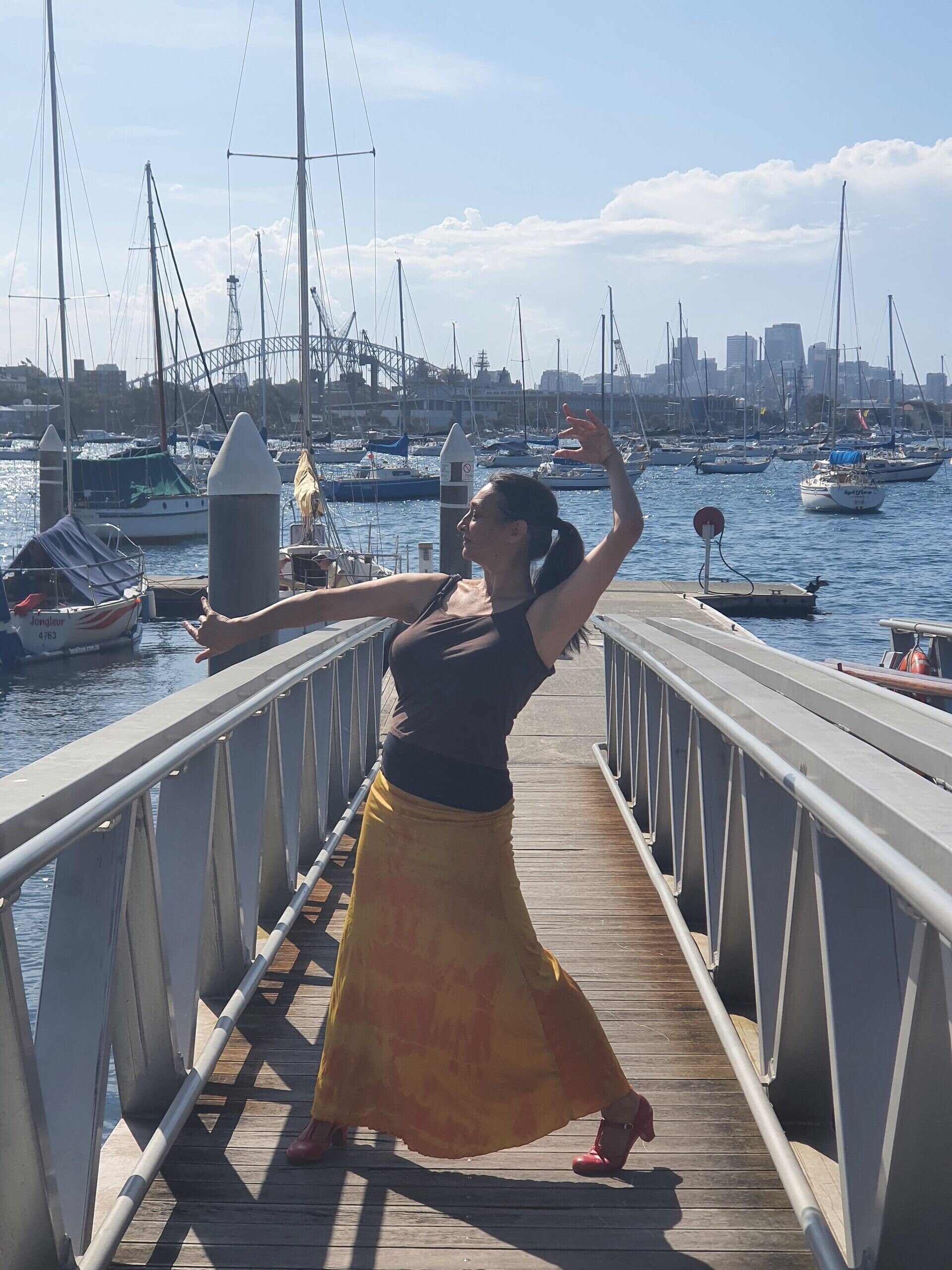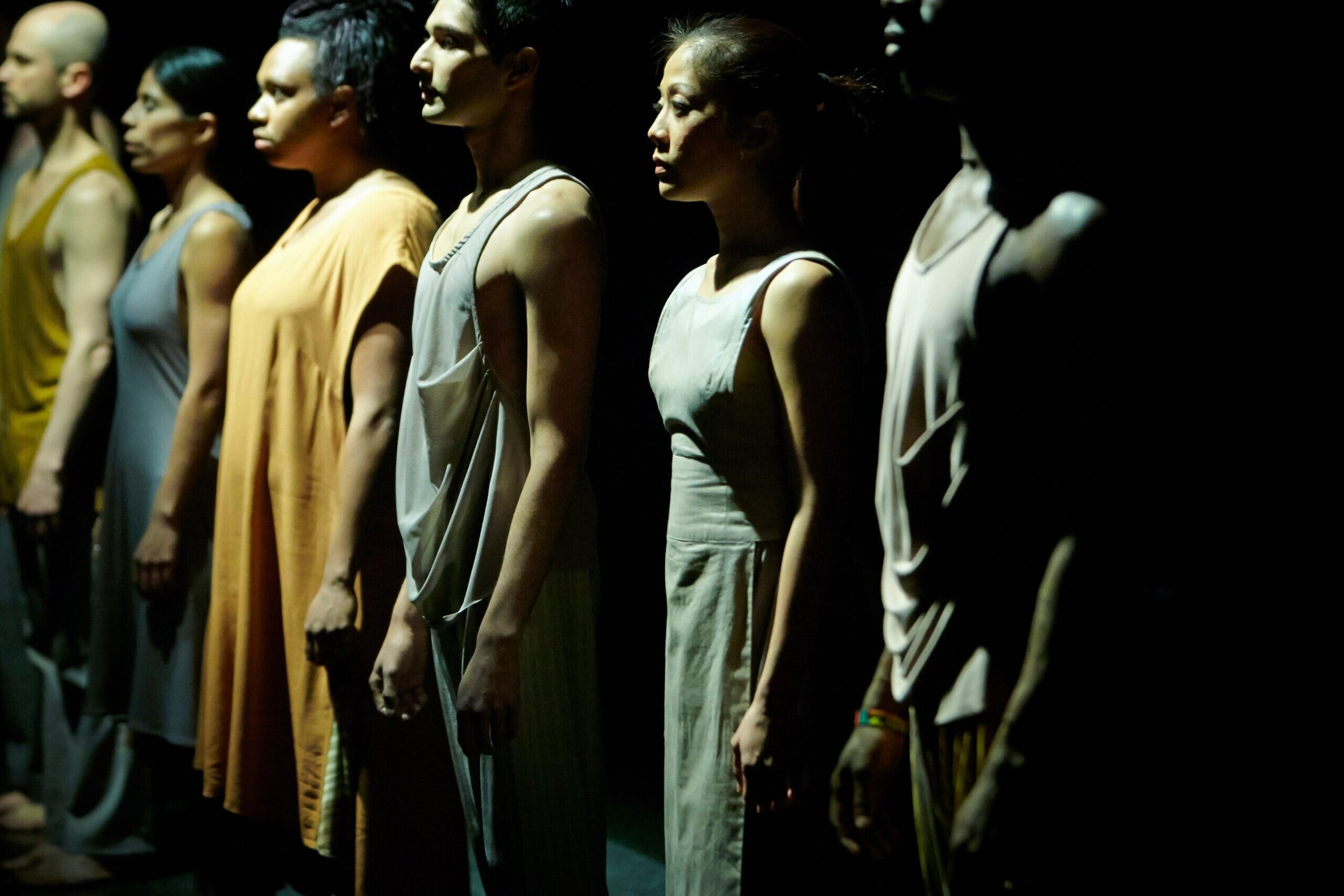'Flamenco Found Me' Australian Jewish News
‘Flamenco found me’
Contemporary flamenco dancing sent Annalouise Paul down a path of discovery into her family’s history.
By SOPHIE DEUTSCH October 28, 2020, 10:50 am
A SPANISH flamenco guitarist once taught Leonard Cohen a sequence of six chords.
Learning these chords – upon which many flamenco songs are based – formed the basis of his compositions, the veteran singer-songwriter and poet revealed during his acceptance speech for a top Spanish literature prize, the Prince of Asturias Award, in 2011.
Cohen spoke of finding his voice, and his song, in a moving personal speech, and with a humility that is characteristic of the late singer-songwriter.
His poetic musings on the creative process extended to an expression of gratitude for a Spanish musical talent from whom he benefited.
Annalouise Paul, who has been dancing contemporary flamenco and choreographing routines for 35 years and is performing Flamenco for Everybody on November 1, has drawn inspiration from Cohen’s address, describing it as a “beautiful speech of resistance”.
“I believe the King and Queen listening at the time knew that flamenco being a marginalised art form represents the voice of the same people who were persecuted,” she said.
While mystery continues to shroud the exact origins of flamenco, one narrative tells that the genre – believed to have arisen out of the Roma migration to Spain between the fourth and 14th centuries – further evolved during the Spanish Inquisition.
When groups of Jews, Moors and Romani escaped from southern Spain, it is thought their musical forms melded together, signalling the development of flamenco into an expression of defiance.
“Arabic, Jewish and Romani are the three predominant elements in flamenco. It’s not a coincidence because those are the cultures that Isabel expelled.
“One narrative is that people hid in caves to practise their religious songs and music and so it became this art form of defiance and these threads of culture came together.”
Indeed, Spanish playwright and poet Federico García Lorca famously observed that cante jondo (meaning ‘deep singing’) was a forerunner to a type of flamenco music called ‘siguiriya’, while flamenco guitarist Paco de Lucía noticed the Sephardic musical influence evident in flamenco.
Annalouise rehearsing at Rushcutters Bay. Photo: Sophie Deutsch ANNALOUISE entered the world of flamenco at age 19 – not because of the Jewish flavour replete in the genre, or because of flamenco’s expressive and passionate movements – but simply because of a sign at Ross Coleman’s Dance Studios on Pitt Street.
“It said flamenco and that was it,” remembered Annalouise. “There was no mystery or magic around it.”
Twenty years on, after living and dancing her way through London and Los Angeles, Annalouise returned to Sydney in 2008.
Back on home soil – around the time when the late García Lorca’s romanticisation of flamenco and exposure of the dark side of Spanish rule was being explored – Annalouise was compelled to create a work about Queen Isabel I of Castile.
Surmising her interest was ignited by more than mere curiosity, learning about Queen Isabel’s reign may offer greater insight beyond inspiration for her next choreographed dance step in Isabel, which was presented in 2008, suspected Annalouise.
Although aware of Sephardi lineage on her father’s side (he was born in India, and left when the nation gained independence in 1947), Annalouise, who was raised by her Ashkenazi mother, said she had minimal understanding of Sephardi culture and history.
Seeking to unearth a possible connection between Sephardim, her family, and flamenco, she followed a hunch that her long-lost aunt, Rachel Waike, may offer some clues.
Annalouise hadn’t seen Rachel, then in her late 80s, since she was four years old. It took some months of mustering up courage before she entered Rachel’s apartment.
Entering a little flat in Kogarah, she saw Spanish dolls with polka-dot dresses perched along the mantelpiece.
“I hadn’t even sat down, and Rachel said, ‘Well, what do you want to know?’
“I want to know who we are, where we come from. Who are your parents, who are my grandparents?” queried Annalouise.
The response was matter of fact.
“We are Spanish Jews, we come from Spain. Queen Isabel kicked us out in 1492.”
Annalouise still feels the gravity of that revelation; her Sephardi ancestry, the dance form she had dedicated 20 years towards mastering, and Annalouise’s production of Isabel collided in one moment of clarity.
“My jaw just dropped,” she said. “Even now, I get goosebumps sharing this.
“Since then I’ve done a lot of research into the Jewish elements of flamenco and it’s absolutely embedded in there. Flamenco is this mixture of Jewish, Arabic and Romani culture, as well as African culture.
“It has opened the door to my own culture. It found me. It pulled me in.”
JUST as flamenco is believed to represent a fusion of Arabic, Jewish and Romani forms, so too does Mother Tongue intersect a multitude of ethnicities.
Consisting of seven artists of Torres Strait Islander, Brazilian, Chilean, Chinese, Indian, Indonesian, Greek and West African backgrounds, Mother Tongue had its pilot at Bangarra Theatre in 2014.
“It is about understanding each other through non-verbal conversation, and not making assumptions about the ‘other’,” explained Annalouise, who choreographed the production.
“The work came about through this idea of conversation and rhythm through body percussion. Flamenco also has that; it is rhythmical. How can the rhythms in the body of an artist from the Torres Strait Islands connect with the rhythms of an artist from India?”
Melbourne-based dancer Govind Pillai – who was born in India and has also lived in Zimbabwe, Papa New Guinea, New Zealand and Sydney – said he is often explaining to others why his classical Indian dance practice, a 3000-year-old tradition called Bhartanatyam, stands out as being different, but working on Mother Tongue has been an eye-opening and unifying experience.
“We were all mind-boggled through the process, at just how similar our lived experiences are, and how we related to the spiritual purpose behind the dance forms.
“We came out with an overwhelming feeling of unity, which I think the audience also experiences when they see diverse voices coming together.”
Bringing traditional forms into modernity – and adding a personal touch – is also at the heart of Pillai’s dancing.
“Your version of classical Indian dance can’t be exactly the same as the old practitioners because you bring your own individuality, and it’s important to build an understanding of how that influences your approach to a traditional dance. The individuality is because of a love for the tradition and not because of rebellion.
“To question and change is a mark of affection because you want it to survive and be the best it can be today.”
A SERIES of free community workshops, for which Annalouise is currently raising funds, will allow participants from culturally and linguistically diverse backgrounds to view video excerpts of Mother Tongue’s pilot, before creating their own artistic interpretations in response to the production’s key themes around belonging, identity and the future.
Many of the participants are recently arrived migrants and refugees, with the workshops designed for disadvantaged communities who often have limited access to the arts.
“It’s making sure that diverse voices get heard and marginalised communities get access,” said Annalouise.
Engagement with participants will also inform the ongoing evolution of Mother Tongue, the final 15 minutes of which is yet to be developed.
Her epiphany to involve communities in the creative process was born out of challenges presented by COVID-19.
As she struggled to find a studio open for practising, she took to rehearsing outside the Drill Hall in Rushcutters Bay.
“Being outdoors has allowed me to interact with community in a new way, and it has allowed me to understand much more deeply how important it is for the general public to connect with art while it is being made,” said Annalouise.
“I want to open it up so it’s not just presenting the finished product but talking about the process. It makes the Mother Tongue workshops even more important because while those participants were not involved in the pilot process, I can bring them in now before it’s finished.”
The Sydney Olympic Park Authority has also expressed interest in producing Mother Tongue for local communities, with one option being to stage the work at the Murama Healing Ground, creating an intertribal experience.
The setting provides the perfect entry point into an artistic production predicated on heritage, connection to the land and healing.
Expanding the boundaries of art, Annalouise describes Mother Tongue as a “social justice project”, and one that also encapsulates her own childhood memories in multicultural Australia.
“It is a way of expressing my experience and childhood as an Australian growing up in the ’70s on the back of the White Australia Policy and what multiculturalism did for me as a child and my understanding of the land we live on,” she said.
“It was a joy to be around kids who were from different places … It’s my lived expression as an Australian on this Aboriginal land that we all inhabit.”
Annalouise has come full circle, revisiting her early memories in multicultural Australia, and her family’s ancestry and connection to land via Mother Tongue.
“It’s about rhythms and connection to land and earth, and flamenco is connected to land, through the Jews, Arabs and Roma peoples losing their land in Spain.”
Buy tickets to Flamenco for Everybody at annalouisepaul.com/purchases.
Donate to Mother Tongue’s Community Workshops campaign at australianculturalfund.org.au/projects/mother-tongue.



